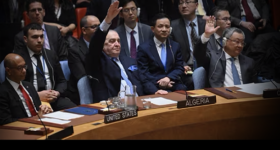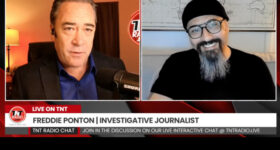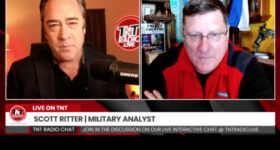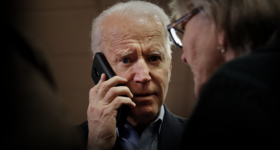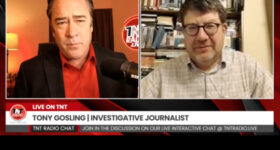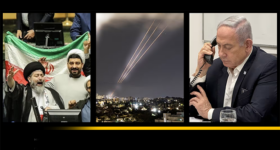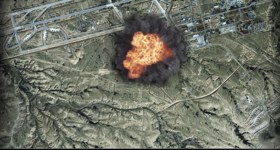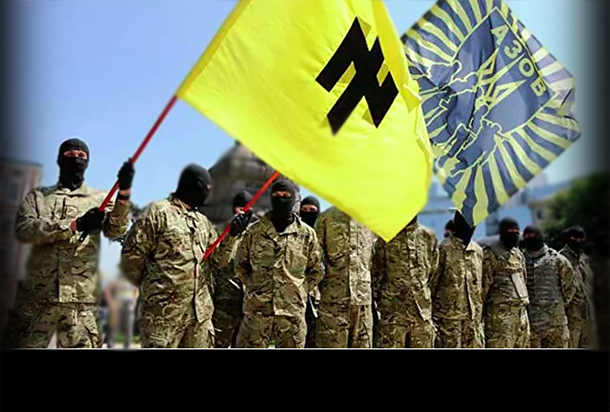
The fact that Ukraine’s Armed Forces are overrun with Nazis has been a source of constant frustration for mainstream media in NATO countries who have been trying hard to portray Ukraine as a bastion of freedom, democracy and liberal European values. This has forced western media operatives to spin the notorious Azov and Aidar battalions, along with bountiful evidence of Nazis in Ukraine – as some invented Russian conspiracy.
In order to obfuscate the Nazi problem inherent in this recent Azov rebranding story, the Times of London attempted a breathtaking leap in propaganda in their recent article entitled, “Azov Battalion drops neo-Nazi symbol exploited by Russian propagandists,” where they infer that Russia is somehow to blame:
The Azov Battalion has removed a neo-Nazi symbol from its insignia that has helped perpetuate Russian propaganda about Ukraine being in the grip of far-right nationalism.
“On the same principles and ideological basis as the legendary Azov regiment, we form new divisions. Every day they become more numerous and professional,” said Maksym Zhorin, an Azov commander, said at the ceremony on Sunday.
The new logo was unveiled this week during Kiev’s launch of a special forces unit assigned to the embattled city Kharkiv, where newly-designed patches were handed out to the soldiers, but without Hitler’s medieval Wolfsangel symbol which Ukraine’s far-right extremist Azov regiments had previously worn for years – until western mainstream media were finally forced to admit that Ukraine had an institutionalized Nazi problem among its military.
RT International reports…
The infamous Azov nationalist regiment, which is being revived by Ukraine after it surrendered to Russian forces in Mariupol, has removed the Nazi-linked Wolfsangel symbol from its insignia, The Times reported on Monday.
According to the British paper, the unit’s new recruits in the city of Kharkov were sporting patches with a golden trident, which is Ukraine’s national emblem, thereby replacing the Wolfsangel or ‘wolf’s hook’ which had been used by the Azov Battalion since its formation eight years ago.
However, the commander of the new unit, Maksim Zhorin, told that paper that it was formed “on the same principles and ideological basis as the legendary Azov regiment.”
The Wolfsangel is a historic heraldic symbol that was chosen by the Nazis during World War II and appeared on the insignia of several SS divisions.
The Azov Battalion: now rated PG-13. pic.twitter.com/K0ONI94Lhw
— Kevin Rothrock (@KevinRothrock) May 31, 2022
The Times said that the presence of the Wolfsangel on the uniforms of the Azov fighters had “helped perpetuate Russian propaganda about Ukraine being in the grip of far-right nationalism.”
However, before the launch of the Russian military operation in Ukraine, the use of Nazi symbolism by the unit had been raising concerns in the Western media, including outlets such as Time magazine and the New York Times.
The Azov Battalion was assembled in 2014 as a volunteer unit that was mainly comprised of far-right activists willing to fight against the self-proclaimed republics in the Donbass region. Several months later, it was officially incorporated into Ukraine’s National Guard by order of then president Petro Poroshenko.
When the Russian offensive started, the Azov Battalion, which had received Western training, was considered one of the most capable formations under Kiev’s command.
The nationalist fighters were tasked with protecting Mariupol, a strategic port on the Sea of Azov, but failed to fulfill their goal. Many of them were killed, while the rest, including the commanders, surrendered to Russian forces earlier in May after being holed up at the Azovstal steel plant for weeks.
When the Russian offensive started, the Azov Battalion, which had received Western training, was considered one of the most capable formations under Kiev’s command.
The nationalist fighters were tasked with protecting Mariupol, a strategic port on the Sea of Azov, but failed to fulfill their goal. Many of them were killed, while the rest, including the commanders, surrendered to Russian forces earlier in May after being holed up at the Azovstal steel plant for weeks.
During the siege, Moscow blamed the Azov unit for allegedly keeping civilians hostage in the facility and using them as human shields.
Footage of the surrendering combatants coming out of the plant showed many of them sporting tattoos of swastikas and other far-right symbols. Nazi-related items and literature have also been discovered inside the steel plant and at Azov bases in the Donbass that have been captured by Russia…
Continue this story at RT International
SEE MORE UKRAINE NEWS AT: 21st Century Wire Ukraine Files
PLEASE HELP SUPPORT OUR INDEPENDENT MEDIA PLATFORM HERE

Get Clive de Carle's Natural Health essentials of the finest quality, including vitamin & mineral supplements here.





